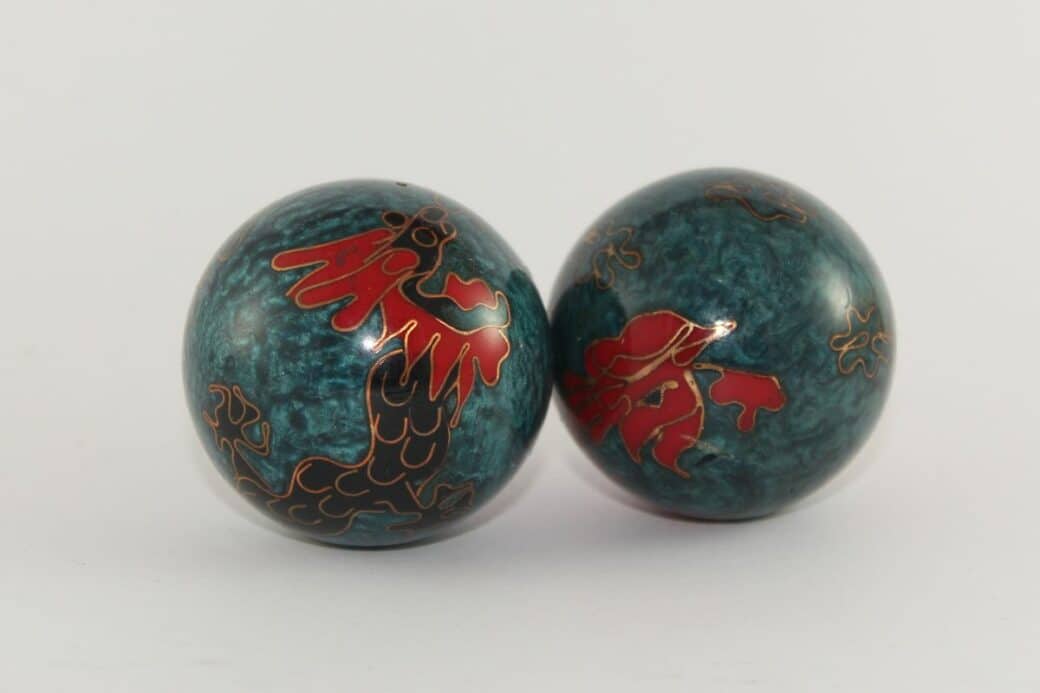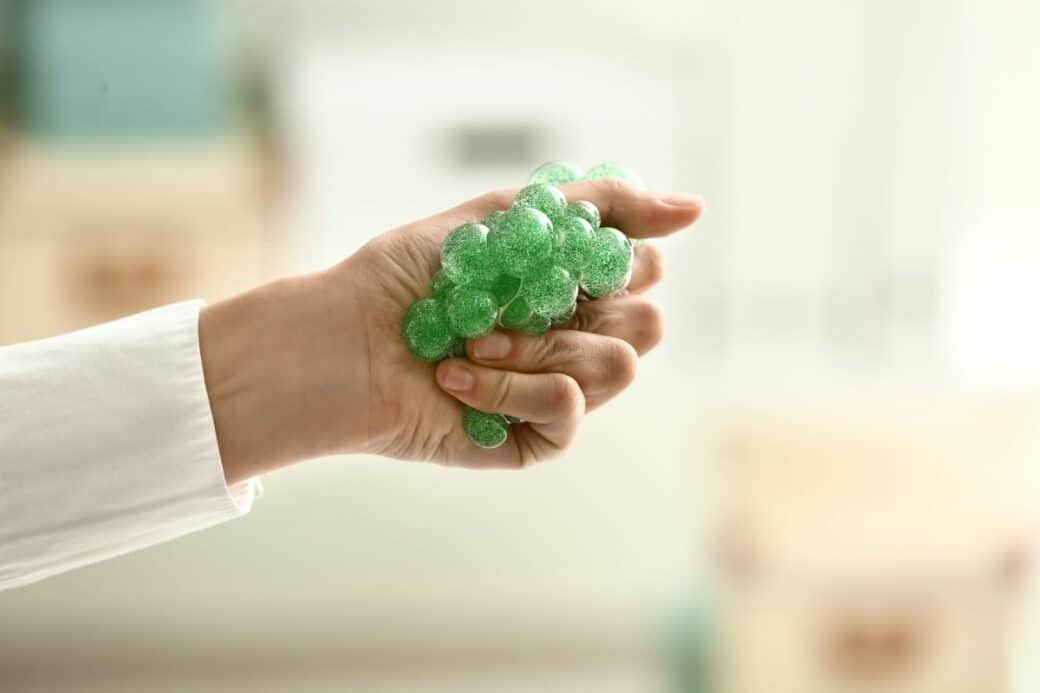Have you ever wondered when stress balls were first invented? In this article, we will take a journey through time and uncover the fascinating history behind these handy stress-relieving tools. From their humble beginnings to their rise in popularity, you’ll discover the origins of stress balls and how they have become a staple in stress management today. Get ready to delve into the past and uncover the untold story of when stress balls were invented.

When Were Stress Balls Invented: Overview of Stress Balls
Stress balls are small objects designed to be squeezed or manipulated with the hands. They are widely used as a tool for stress relief and relaxation. Stress balls come in various shapes, sizes, and materials, offering users a wide range of options to suit their preferences. Whether you are looking to alleviate stress, improve focus, or simply keep your hands busy, stress balls can be a beneficial addition to your daily routine.
Cultural Origins of Stress Balls
Role of stress balls in ancient cultures
While stress balls may seem like a modern invention, their roots can be traced back to ancient civilizations. The use of stress-relieving objects dates back centuries and can be seen in various ancient cultures. In ancient Greece, for example, people would squeeze leather balls filled with sand or other materials to relieve stress and improve hand strength. The practice was also prevalent in the Roman Empire, where soldiers used similar objects to relieve tension and anxiety before battles.
Use of similar tools in historical societies
Stress balls, or tools similar in nature, were not only limited to ancient Greece and Rome. In ancient China, for instance, a similar tool known as the Baoding balls was used. Baoding balls, also referred to as Chinese meditation balls, are small metal spheres traditionally made of solid metal with intricate designs. They are designed to be rotated within the hand, providing relaxation and promoting hand-eye coordination. The cultural significance of stress-relieving tools across various historical societies highlights the universal human need for stress relief.

Chinese Baoding Balls
Definition and history of Baoding balls
Baoding balls originated in the city of Baoding in China during the Ming Dynasty. These hand exercise tools were initially made of iron or stone and were used by the royal court as a form of entertainment and stress relief. The name “Baoding balls” comes from their place of origin, and they are often referred to as “Chinese therapy balls” due to their therapeutic effects. Over time, the balls evolved in design, with intricate patterns and symbols carved into them, making them not only functional but also visually appealing.
Uses and benefits of Baoding balls
Baoding balls are primarily used for their stress-relieving and relaxation properties. By rotating the balls within the hand, users engage their finger muscles and promote blood circulation. The repetitive motion can help reduce muscle tension, alleviate anxiety, and increase focus. In addition to their therapeutic benefits, Baoding balls are also believed to improve hand dexterity, coordination, and cognitive abilities. These versatile tools have gained popularity worldwide and are now widely used for stress relief and hand exercises.
Introduction to western cultures
First appearance of stress balls in the West
The concept of stress balls started gaining popularity in Western cultures in the late 20th century. They were initially introduced as a physical therapy tool for hand rehabilitation. Physical therapists discovered that manipulating stress balls could help patients improve their grip strength and coordination. Soon after, stress balls began to be marketed as stress-relieving tools for the general public, tapping into the growing demand for stress management solutions.
Adoption and evolution in Western societies
As stress balls gained traction in Western societies, they underwent various design and material advancements. Initially, stress balls were made of soft foam, providing a squishy texture and easy gripping. However, as the demand for stress balls increased, manufacturers started experimenting with different materials, such as gel-filled balls, rubber-coated balls, and even stress balls made of unconventional substances like glitter or sand. These iterations allowed users to find stress balls that suited their preferences in terms of texture, firmness, and sensory experience.
Medical Books and Writing Records
Earliest medical literature citing stress balls
The concept of using stress balls as a therapeutic tool is not a recent development. References to similar hand exercises can be found in ancient medical texts. One of the earliest mentions can be traced back to the ancient Indian medicinal system of Ayurveda, where hand exercises involving the squeezing of seeds or clay were recommended to maintain good health and alleviate stress. These practices were believed to harmonize the body’s energy flow and promote overall well-being.
Historical role in physiotherapy and stress management
Stress balls have long been recognized for their benefits in physiotherapy and stress management. In the early 20th century, stress balls were frequently used in hand rehabilitation programs for patients with hand injuries, arthritis, or conditions affecting their fine motor skills. The repetitive squeezing motion of stress balls helps strengthen the hand muscles and improve grip strength. Furthermore, stress balls became popular as stress management tools in both clinical and non-clinical settings, serving as a simple and accessible method for individuals to alleviate stress and anxiety.
Modern incarnation of the Stress Ball
Changes in design and materials over time
With advancements in manufacturing techniques and increased demand, stress balls have undergone significant changes in design and materials over time. While early stress balls were often made of foam or rubber, modern stress balls now come in a diverse range of materials, including silicone, gel beads, fabric, and even memory foam. These advancements have allowed for greater customization and sensory experiences, catering to the individual preferences and needs of users.
Impact of modern manufacturing techniques
Modern manufacturing techniques have also played a crucial role in the proliferation of stress balls. With the advent of mass production methods, stress balls became more affordable and accessible to a wider audience. This accessibility has further contributed to their popularity as a stress relief tool, as individuals from all walks of life can easily obtain and benefit from stress balls.
Popularity Rise in the Corporate Environment
Role of promotional stress balls in marketing
Stress balls have become a popular promotional item in the corporate world. Many businesses choose to customize stress balls with their logos and distribute them as promotional gifts during events, trade shows, or conferences. By incorporating stress balls into their marketing strategies, companies not only create brand visibility but also associate their brand with stress relief and well-being. This marketing approach has contributed to the increased visibility and use of stress balls in the corporate environment.
Impact on workplace culture and stress level
The presence of stress balls in the workplace has had a noticeable impact on workplace culture and stress levels. By encouraging employees to use stress balls during breaks or moments of stress, employers promote a more relaxed and positive work environment. These small, squeezable objects provide a tactile outlet for stress, allowing individuals to release tension and refocus their energy. As a result, stress balls have become a common sight in office settings, helping employees manage stress and improve overall productivity.
Current Uses and Varieties of Stress Balls
Different materials and filling used in modern stress balls
Modern stress balls come in a wide variety of materials and fillings, catering to individual preferences and needs. Foam stress balls provide a soft and squishy texture, making them popular for stress relief. Gel-filled stress balls offer a more fluid feel and are often used for therapeutic purposes, such as hand exercises or stress reduction in physical therapy settings. There are also stress balls made of fabric or silicone, providing different tactile sensations. The range of materials and fillings available allows individuals to choose a stress ball that best suits their sensory preferences and therapeutic goals.
Current therapeutic uses of stress balls
Stress balls are widely used as a therapeutic tool in various settings. In addition to their traditional role in stress management, stress balls have found applications in occupational therapy, where they aid in the development of hand strength, dexterity, and coordination. They are also used in rehabilitation programs for individuals recovering from hand injuries or surgeries. Furthermore, stress balls are often recommended as a tool to manage symptoms of conditions such as anxiety, ADHD, and autism spectrum disorders. The versatility of stress balls as a therapeutic tool continues to expand, adapting to the evolving needs of individuals across different contexts.
Scientific View on the Effectiveness of Stress Balls
Analysis of stress ball efficacy
The effectiveness of stress balls as a stress relief tool has been a subject of scientific inquiry. While there is limited scientific research specifically focused on stress balls, studies examining similar stress-reducing techniques, such as hand exercises and squeezing objects, provide insights into their potential efficacy. These studies suggest that repetitive hand exercises can help reduce stress, increase muscle relaxation, and improve overall well-being. However, further research is needed to fully understand the specific effects and mechanisms behind stress ball usage.
Contemporary research and findings on stress balls
Contemporary research on stress balls has explored their potential benefits in specific populations and contexts. Studies have shown that stress balls can help individuals with autism spectrum disorders manage stress and anxiety. Additionally, research has highlighted the positive effects of stress balls in reducing symptoms of occupational stress among healthcare professionals. These findings contribute to the growing body of evidence supporting the therapeutic value of stress balls in various applications.
Future of Stress Balls
Emerging trends in stress ball design and use
As stress management techniques continue to evolve, so does the design and use of stress balls. Emerging trends in stress ball design include the integration of technology, such as incorporating sensors to track hand movements and provide feedback. This innovation allows for a more personalized and interactive therapeutic experience. Furthermore, stress balls are likely to continue to adapt to individual preferences, with customizable options that cater to specific sensory needs. The future of stress balls holds exciting possibilities for enhanced stress relief and therapeutic benefits.
Predictions for the future of stress balls
The future of stress balls is poised to witness further integration into various industries and therapeutic practices. With increasing awareness of the importance of stress management, stress balls are likely to become a staple tool for individuals seeking relaxation and well-being. Additionally, as technology advances, stress balls may be incorporated into virtual reality or augmented reality experiences, providing an immersive and interactive stress relief experience. The potential for stress balls to become an integral part of holistic well-being practices is promising, indicating a bright future for these simple yet powerful stress-relieving tools.
In conclusion, stress balls have a rich history that spans across cultures and times. From their origins in ancient civilizations to their modern-day incarnation, stress balls have evolved into versatile tools for stress relief, hand exercises, and therapeutic purposes. Their popularity in the corporate environment and their diverse range of materials and uses highlight their widespread appeal. While scientific research on stress balls is ongoing, current findings support their efficacy in stress management and physical therapy. The future holds exciting potential for stress balls, with emerging trends in design and use offering innovative ways to enhance relaxation and well-being. Whether you are seeking stress relief, hand rehabilitation, or simply a tactile outlet, stress balls continue to provide a friendly and effective solution to help you unwind and find tranquility in this fast-paced world.




